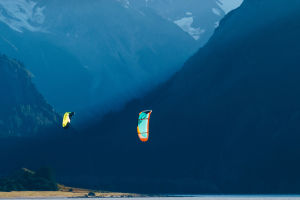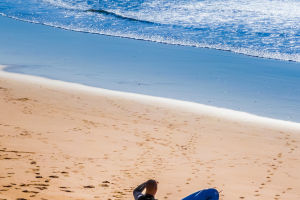Glacier hiking is a popular activity that allows adventurers to explore the stunning beauty of glaciers up close.
Glaciers are massive rivers of ice that form over many years in areas of high snowfall and cold temperatures.
They can be found in many parts of the world, including Alaska, Iceland, and New Zealand, and offer a unique and unforgettable hiking experience.
Before embarking on a glacier hike, it is important to be properly prepared.
This includes wearing appropriate clothing and gear, such as warm layers, waterproof boots, and crampons or ice axes for traction.
It is also important to be in the good physical condition and to have some experience with hiking and climbing.
One of the key advantages of glacier hiking is the opportunity to see some of the most spectacular natural scenery in the world.
Glaciers are breathtakingly beautiful, with towering ice formations, deep blue crevasses, and stunning vistas that can stretch for miles. Hikers can experience the thrill of climbing steep ice walls, crossing narrow bridges over deep ravines, and exploring hidden ice caves and tunnels.
However, glacier hiking also carries some risks and challenges. Glaciers are constantly changing and can be dangerous if proper precautions are not taken.
Weather conditions can be unpredictable, with sudden storms or avalanches posing a risk to hikers. In addition, glaciers can be unstable and create a risk of falling through thin ice or into crevasses.
Therefore, it is important to always hike with an experienced guide who can provide safety tips and guidance.
Despite these challenges, glacier hiking can be a rewarding and unforgettable experience. It offers the chance to connect with nature uniquely and powerfully and to challenge oneself physically and mentally.
By following safety guidelines and being properly prepared, hikers can enjoy the thrill of exploring some of the most stunning natural wonders on Earth.
In addition to its natural beauty, glacier hiking also provides a unique opportunity to learn about the science and ecology of glaciers.
Glaciers are important indicators of climate change, and their retreat and melting are a major concern for scientists and environmentalists. By hiking on a glacier, hikers can gain a deeper understanding of the impact of climate change on these important natural resources.
Glacier hiking also offers a chance to learn about the history and culture of the areas in which they are found. Glaciers have played an important role in shaping the landscapes and cultures of many regions, including the Inuit people of Alaska and the Maori people of New Zealand.
By hiking on a glacier, hikers can gain a deeper appreciation for the history and traditions of these unique and fascinating cultures.
Glacier hiking is a thrilling and rewarding activity that offers a unique way to experience the beauty and power of nature. It requires preparation, physical fitness, and safety precautions, but the rewards are well worth the effort.


